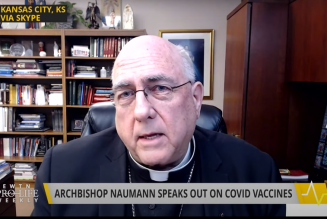
The late Cardinal Francis George once commented that we need to be precise in our education. What he meant by precision is both the transmission and articulation of the Catholic faith in a clear cogent manner so that it does not deviate from the teachings of Jesus Christ. Jesus established the Church to preserve the integrity and identity of the Trinity and transmit the revelation of God the Father through the Son that if preserved and followed leads to man’s eternal relationship with God in Heaven. Hence, the need for clear educational precision of the Catholic faith.
St. John Paul II years before Cardinal George’s statement on education echoed the same sentiment:
There is also a pedagogy of faith, and the good that it can do for catechesis cannot be overstated. In fact, it is natural that techniques perfected and tested for education in general should be adapted for the service of education in the faith. However, account must always be taken of the absolute originality of faith. Pedagogy of faith is not a question of transmitting human knowledge, even of the highest kind; it is a question of communicating God’s revelation in its entirety. Throughout sacred history, especially in the Gospel, God Himself used a pedagogy that must continue to be a model for the pedagogy of faith. A technique is of value in catechesis only to the extent that it serves the faith that is to be transmitted and learned; otherwise, it is of no value.[1]
The value of education in the Catholic faith is its identity in the Trinity and revealed further in Jesus Christ the Incarnate Word. Frank Sheed was once asked “what is the aim of teaching religion.” His response: that the indispensable minimum for all students coming out of Catholic schools is that they should emerge with a tremendous devotion to Christ and an awareness of Him, his life and personality with a desire to increase that knowledge.[2] Sheed’s description is very important for us to consider because he placed significant emphasis on the need to be “aware” of Jesus Christ as both human and Divine.
A Lack of Sacramental Awareness
An important distinction needs to be made between the development of an awareness of Jesus Christ versus reception of sacramental goods in the name of Jesus Christ. An awareness of Christ may be defined as a gradual and active change-conversion to Jesus Christ. This involves an openness to truth, a development of trust toward Christ and the Church, and a willingness to investigate this truth and determine its applicability in daily life. Awareness coincides with an openness to truth of the Church and whom she serves as the bride of Christ. This important journey of Trinitarian and Christological awareness serves as preparation for reception of the sacraments the unique gifts of grace provided by Jesus Christ to strengthen our awareness and understanding of Him.
On the opposite side of this development is the view that one receives sacramental goods provided by Jesus Christ. The goods in question serve as a means to an end without an intention to actually utilize and practice these goods on a daily basis. The person who views the sacraments in a utilitarian way or as a means to an end sacramentally truly believe that reception of the sacraments of initiation have completed their journey with Jesus Christ. The result is a passive response toward reception of the sacraments instead of an active response and hence a withered relationship with our Lord. Fr. Nicholas Halligan provides context to what our response to reception of the sacraments should look like:
The valid reception of a sacrament (except infant baptism) requires that the person have an intention of receiving it, differing in the various sacraments. It must be a positive act of the will and not a passive attitude, neither willing or not willing, bit here and now the will is said to be not obstructing rather than positively consenting . . . the intention must be at least habitual and may be implicit except for Orders, Matrimony, and the Eucharist when it must be explicit.[3]
A New Creation
An important distinction must be made about the nature of the Church and its sacramental life; its mission to unite us to the Incarnation. The substance of our identity as children of God is made anew through Jesus Christ the Incarnate Word who provides the sacramental nourishment to sustain us in our journey to Heaven. The Catechism states explicitly that the Word became flesh to make us partakers of the Divine nature.[4] This means when the Word of God became man, we as children of God became a son of God hence a new creation through Jesus Christ. Belief in the true Incarnation of the Son of God is the distinctive sign of Christian faith.[5] The reality of the Incarnation is that it gave humanism a Christian identity hence Christian humanism.
Preserving the memory of the Church
The preservation of the Church’s heritage and tradition involves the preservation of man’ soul. This is how the memory of the Church as the Bride of Christ is preserved. For man to capture and expand the gift of the Church he must be formed in the heart. This requires acute attention toward a healthy and loving relationship with Jesus Christ the moment when either we are born and exposed to the faith of our parents or when we make a profession of faith as adults to accept Jesus Christ and His Church into our life.
Romano Guardini describes the inexpressible duality between the Father and the Son in how they gaze into each other’s countenance, sharing the bliss of mutual love with none of the impotency of separation.[6] The beauty of Guardini’s description of the Father and Son’s relationship provides context of how we can preserve the memory of the Church. Our educational precision is predicated on this important duality because it reflects the importance of the Incarnation and the image of Jesus as the Good Shepherd.[7] The basis of this parable reveals Jesus-the Shepherd’s intention to lay down his life for us-his sheep. That Jesus Christ would offer Himself for the salvation of humanity is a central part of the mystery of the Church and its enduring memory for all humanity.
Sound catechesis involves the concern for a person’s soul, to provide an environment where the person is offered the opportunity to gaze at Jesus Christ and fall in love with Him and His Church. The aim of catechetical instruction involves the development of an intimate union between God and Man through the Son strengthened through the Holy Spirit. What we have in this formula is a union between the spiritual and the physical. First, the person is guided-openness to a relationship with Jesus Christ, nurtured-trust that Jesus Christ truly desires a relationship with you, and finally nourished-doctrinal formation in the teachings of Jesus Christ. The result of this three-fold approach is the initiation and preservation of the Church in the heart and mind of the soul of man.
Preserving the memory of the Church provides those whom we educate the desire for the beatific vision. This is our aim in guarding the memory of the Church through the transmission of the Catholic faith. It should be revealed, demonstrated, and taught that Catholicism serves as the entrance to Heaven.
[1] St. John Paul II, Catechesi Tradendae, 58
[2] Sheed, Frank, The Aim of teaching religion, (Sheed &Ward, New York, 1956) p. 3
[3] Halligan, O.P., Nicholas, The Sacraments and Their Celebration, (Wipf & Stock, Eugene, 1986), p. 19
[6] Guardini, Romano, The Lord, (Regnery, Washington, D.C. 2016), p. 186
Join Our Telegram Group : Salvation & Prosperity









